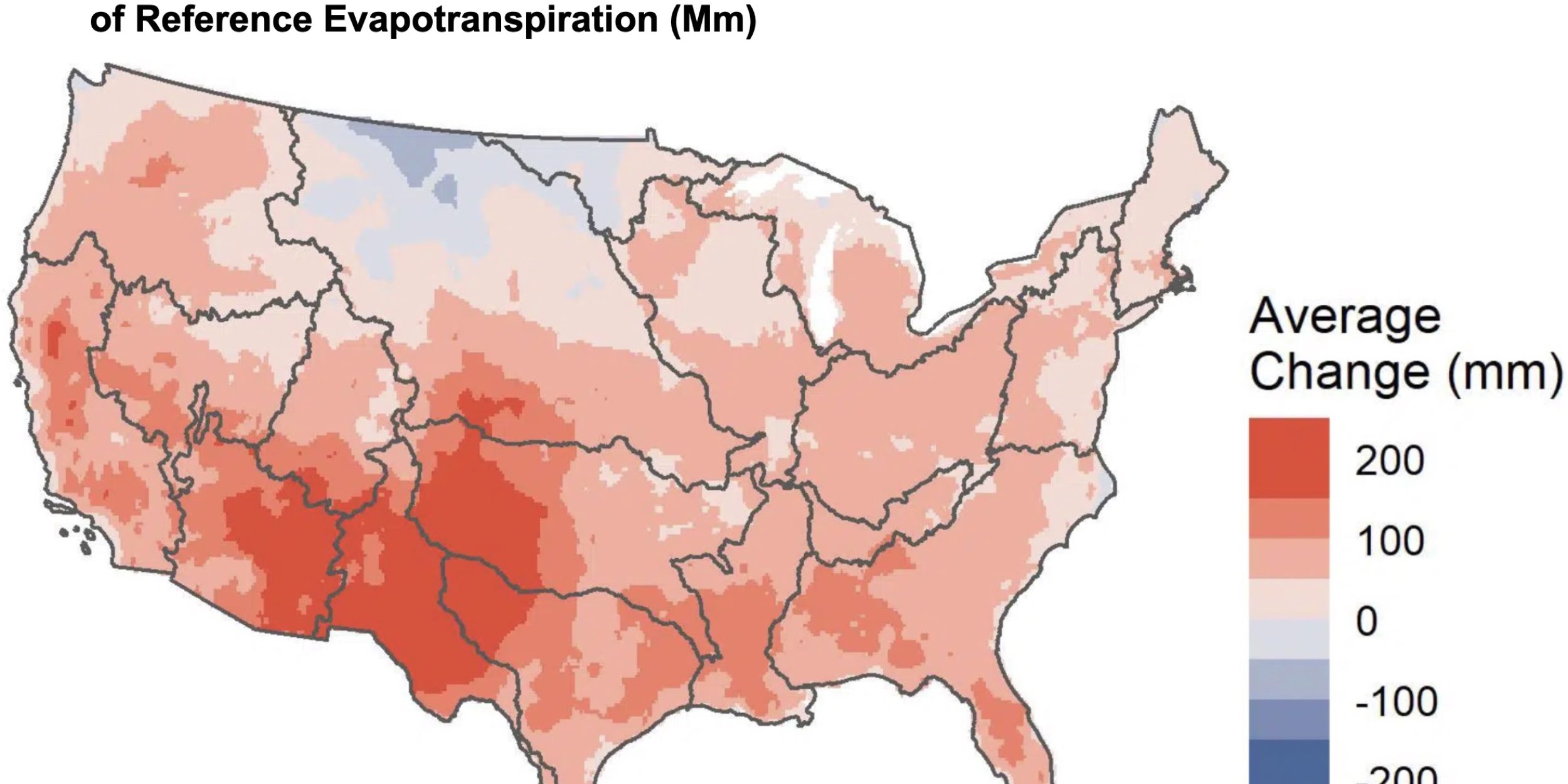While temperature changes across the U.S. of 1-2 degrees over the past 40 years are well established, changes in atmospheric evaporative demand – defined as the amount of water that could be transferred from the land surface to the atmosphere – are not as well quantified. This study, led by the Desert Research Institute with funding from NIDIS and the California-Nevada Climate Applications Program (CNAP, a NOAA RISA), addressed this gap and found that evaporative demand is increasing across nearly all of the U.S., especially in the Rio Grande and Lower Colorado River basins. Higher evaporative demands means less water supplies, drier soils and vegetation, and higher fire risk. Increased evaporative demand will be an essential consideration for land and water management planning going forward. In addition to NIDIS and CNAP funding, this collaborative interagency research was supported by NASA Applied Sciences Water Resources Program, U.S. Geological Survey Landsat Science Team, and USDA National Institute of Food and Agriculture.
For more information, contact Amanda Sheffield.


